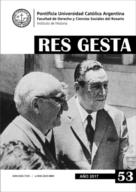Historiografía del método etnohistórico: Orígenes y desarrollo local
Keywords:
History of Anthropology, Ethnohistorical Data, Academic PoliciesAbstract
This paper seeks to elucidate that the use of colonial documents by anthropologists was introduced and defined in the United States during 1909, before the statement made by Pier Paolo Viazzo, which locates the origin of Historical Anthropology during the 1960s, and refers historians as Carlo Grinzburg who began to make use of the "anthropological question" about archival work.
It is presented evidence that the ethnohistorical method, understood as the analysis of colonial documents to reconstruct the past of peoples without writing, was introduced and defined as such by American anthropologists in 1909, a definition supported by information inscribed in Museum Catalogs as a valid source of historical data.
The ethnohistorical method originated in the USA followed a different development in other American academies. While in Peru the ethnohistorical data were introduced during the 1950s to complement fieldwork, the Argentine academy would have to wait twenty more years to incorporate them as irreplaceable resources in the making of hypotheses and archaeological inferences.
Downloads
Downloads
Published
How to Cite
Issue
Section
License











